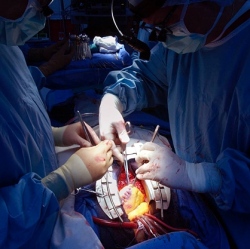
Reporting in the journal Cell, they describe a technique that keeps tissues intact but allows key body parts and connections to be seen. They say it could help visualise how separate organs interact and pave the way for a new generation of treatments. The method may also be used to detect the spread of viruses and cancers in human tissues.
For almost a century scientists have attempted to turn opaque organs see-through, but most techniques have damaged tissues, putting a stop to further medical tests. The fatty lipid molecules present in cells can distort light rays, rendering tissues opaque. But processes used to dissolve them have deprived organs of this key element of structural support, resulting in a shapeless mass of material.
Now researchers from the California Institute of Technology say they have achieved the "biologists’ dream". Building on previous work the team have developed a three-stage technique:
A soft plastic-like mesh provides support to tissues
Then a molecular detergent is continually infused via the bloodstream, dissolving away lipids and making organs transparent
Specific tracing dyes and tagging molecules can be added to the infusion to flag up the most important connections.
Using this method in rodents, researchers were able to clear whole kidneys, hearts, lungs and intestines within three days and the entire body within two weeks.
